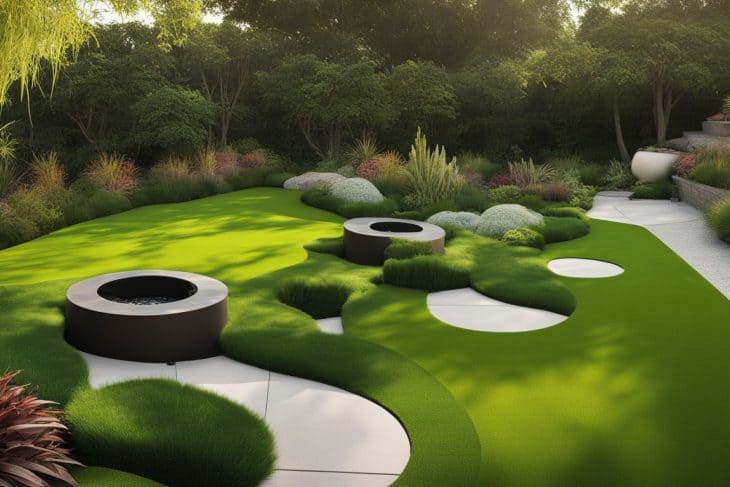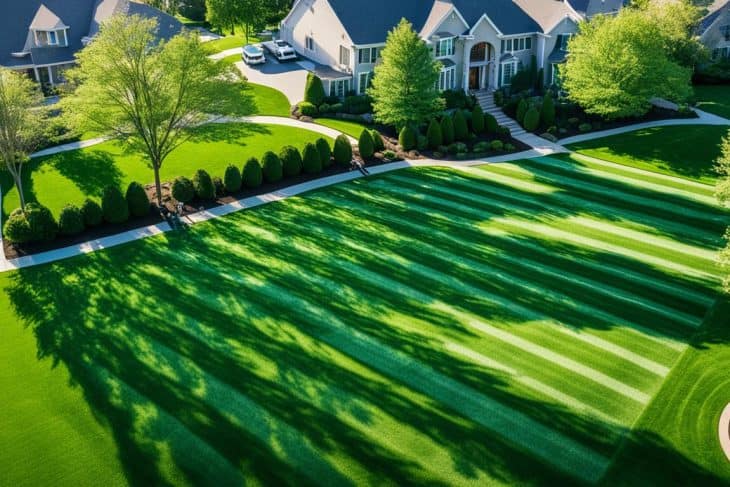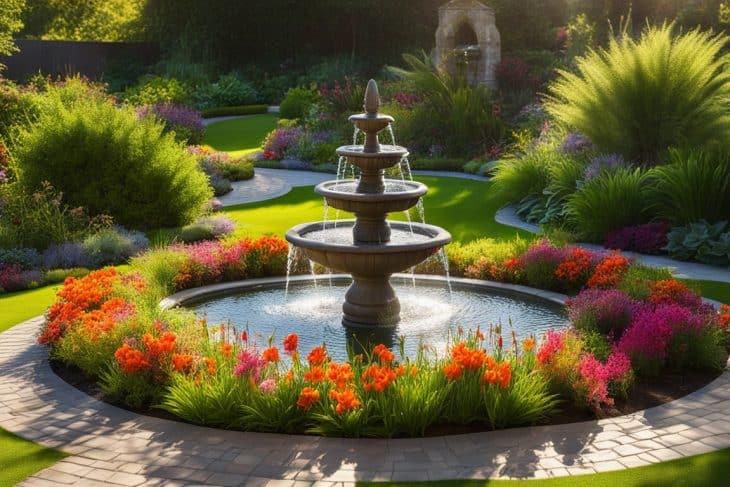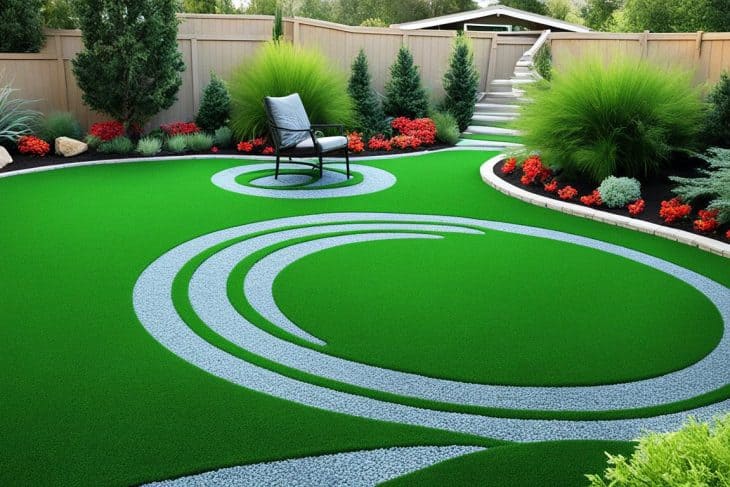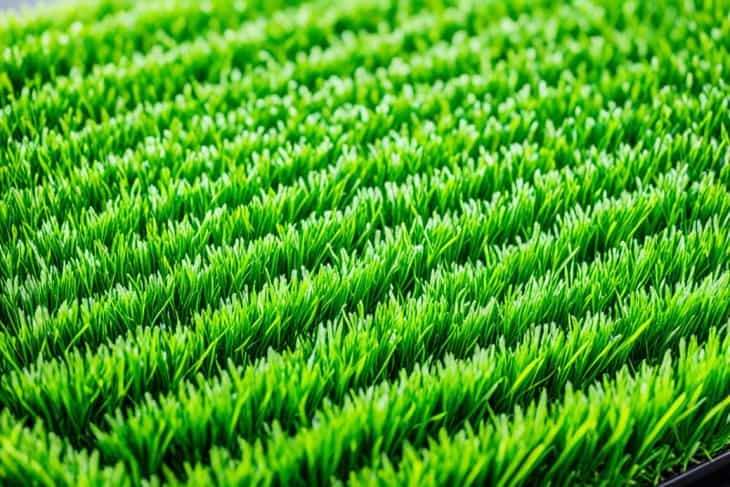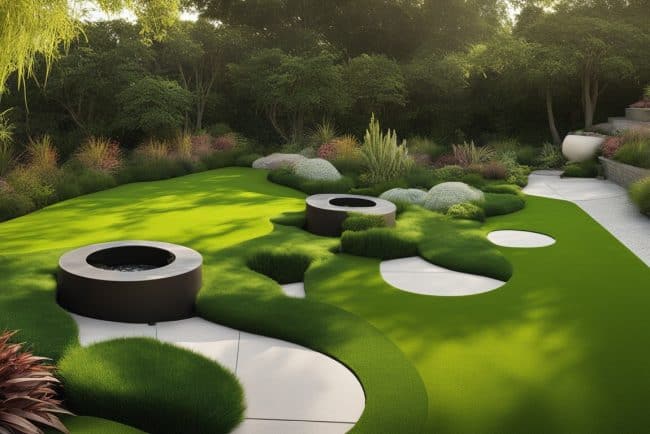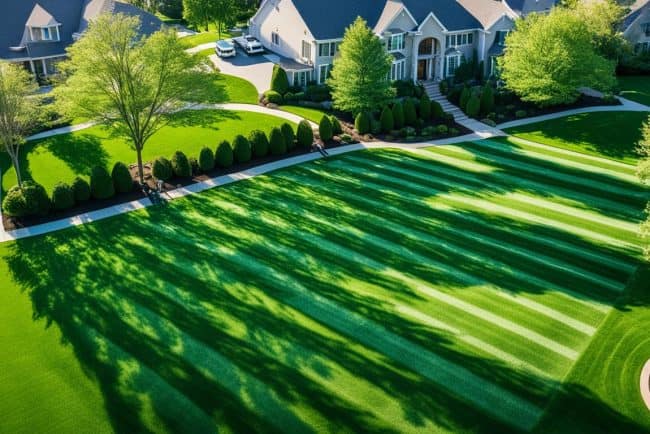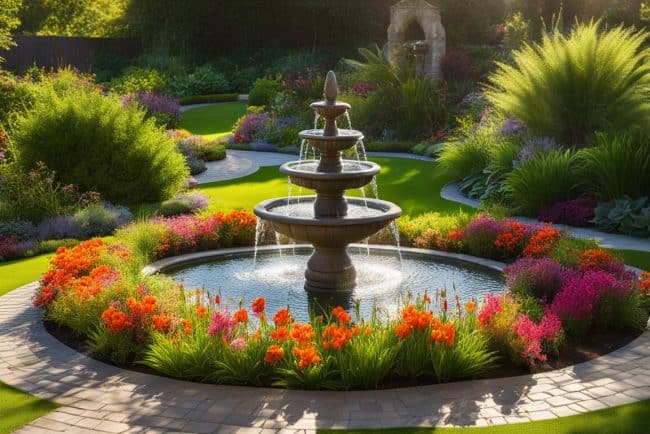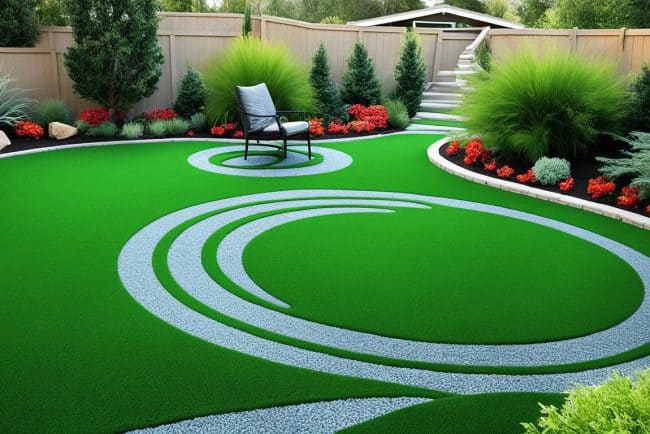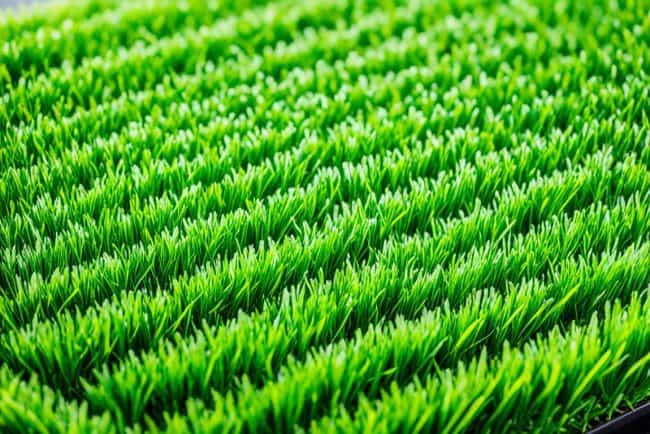
Standing in my yard, I saw the grass turn brown under the sun. The soil started to show. That’s when I decided no more fighting the weather. I wanted a green oasis. So, I began to plan for a synthetic lawn. I found the Turf Cost Calculator. It was just what I needed to figure out my budget.
The calculator was a big help for estimating costs. It showed me the prices for different types of turf and installation. I wondered, should I pick the cheaper polypropylene or the nicer nylon? How would the density of the grass blades affect my budget? These details were key for planning my lawn upgrade. With this calculator, making choices became much easier. I felt ready to tackle my project.
Understanding Synthetic Grass Pricing
Synthetic grass costs can differ a lot based on many things. The type and size of your place matter a lot in setting the price. Usually, smaller houses have higher costs per square foot. This happens because of the work needed to prepare the site and keep it up. Knowing these things is key if you’re thinking about an artificial lawn.
Factors Influencing Artificial Turf Costs
Some main things impact how much artificial turf costs. Here are the important ones:
- Property Size and Shape: Big areas tend to cost less per square foot than small or complex shaped lawns.
- Materials Used: The kind of turf makes a big difference in price. Choices range from cheaper polypropylene to pricier nylon.
- Additional Features: Things like UV resistance, fighting germs, and thicker turf can raise the price.
- Installation Conditions: Hard to manage areas or tough grounds can make cutting and labor more expensive.
Material Varieties and Their Impact on Price
The type of turf material greatly affects how much synthetic grass costs. For example, polypropylene turf can be as cheap as $2 per square foot. Nylon, known for being tough and looking good, can cost between $5.50 and $6.50. Polyethylene sits in the middle at about $2.50 to $4.50 per square foot. These price differences show the quality of the turf and how it affects both the installation bill and how long the lawn lasts.

How to Measure Your Lawn for Cost Estimation
Measuring my lawn accurately is key to estimate turf installation costs. I’ll use a tape measure and a notepad for this. This way, I get the exact square footage and a correct budget.
Calculating Square Footage Accurately
Calculating square footage is simple for rectangular areas. I just multiply the length by the width. For complex shapes, I break them into rectangles, measure, and add the areas.
This approach makes my measurements precise. It also makes estimating costs for turf installation better and more efficient.
Account for Irregular Shapes and Obstacles
My lawn has irregular shapes and obstacles in some places. I measure around these, noting areas where turf won’t go. Then, I subtract these from the total square footage. I add 10% extra to cover any waste.
This extra step helps avoid unforeseen costs. It ensures my budget stays on track.
What is the Turf Cost Calculator?
The Turf Cost Calculator is a must-have for those planning an artificial lawn. It lets me put in my lawn’s details to see expected costs. It helps figure out my budget and make smart choices.
Functionality of the Calculator
Using this online tool is simple. I just fill in the lawn size, turf type, and extra options. Then, I instantly get a price estimate.
This price includes the cost of materials and labor. It shows where my money goes.
Benefits of Using a Cost Estimator for Your Project
Using a cost estimator has big upsides. It lets me weigh my options and avoid surprise costs. This way, I can stick to my budget and focus on what’s important. It ensures my project turns out great without overspending.

Estimating Costs for Materials and Installation
When planning for turf installation, it’s important to know the costs of materials and labor. You’ll need to choose the right materials for your project. Also, think about if you want to do it yourself or hire a pro. Many factors can change your total budget.
Common Materials Required for Turf Installation
For a successful turf project, you’ll need certain materials:
- Artificial grass: Prices range from $1.89 to $4.99 per square foot.
- Infill: Essential for enhancing durability and aesthetics.
- Class II road base: Provides stability beneath the turf.
- Weed barrier fabric: Helps prevent unwanted vegetation from growing through the turf.
- Seaming materials: Necessary for proper installation and to ensure a seamless appearance.
On average, materials cost between $2 and $8 per square foot. This depends on the quality and type you pick.
Labor Costs: DIY vs. Professional Installers
Choosing between DIY or hiring professionals is a big decision. It affects your finances. Doing it yourself may save money. But, professional installers often do a better job and their work lasts longer.
Labor costs for sod range from $2 to $4 per square foot. For artificial grass, it’s $5 to $20 per square foot, depending on the prep work needed.
Many factors can influence your labor and installation costs. This includes land leveling or removing old grass. It’s important to consider all costs when planning your budget. This helps you plan more effectively.

Additional Expenses to Consider in Your Steady Budget
When starting an artificial grass project, costs like materials and labor are just a part. It’s also important to look at other money matters. Things like operating costs and permits can really change the budget for your artificial grass. Knowing these parts makes for a solid money plan for your turf work.
Overhead and Operating Charges Made Simple
Overhead costs come from different areas of a turf project. These can have:
- Worker’s compensation costs, which keep workers safe if accidents happen.
- General liability insurance for possible damage or lawsuits.
- Administrative costs for managing and running the project.
It’s key to include these costs in your budget. They add to the project’s overall expenses.
Permitting and Site Prep Fees
Before putting down the grass, it’s important to get the right permits. Local rules might need specific okay, and this can cost money. Also, making the site ready can’t be skipped. You might need to even out the soil, clear trash, or prep the ground. This varies with the site’s current state. By planning for these costs early, you can dodge unexpected bills later.
Planning Your Artificial Lawn Project
Starting a planning turf project means first knowing what I need and how to achieve it. Choosing the right type of turf is key. Different types offer durability, beauty, or are great for pets. Thinking about this early helps pick the best option for my lawn.
Choosing the Right Turf Type for Your Needs
When picking turf, several things matter. Each kind has its pros and cons, affecting look, use, and how long it lasts. For example, synthetic grass might cost less at first. But higher-quality options like hybrid grass last longer. It’s important to think about how the space will be used.
Customizations That May Affect Your Budget
Looking into my project further, I need to think about how certain choices can change costs. Picking designs, drainage, or special infill can increase what I spend. Designs that fit my landscape well look great but cost more. Planning these details ahead of time prevents surprises with the budget later on.
Calculating Long-Term Savings with Artificial Grass
Putting money into artificial grass leads to big savings over time, not just at first. The cut in water use is a key benefit. Traditional grass needs lots of water, costing more where droughts hit hard. By choosing artificial turf, I cut my water bill a lot and spent less on upkeep. It costs about $250 to $350 a year to keep synthetic grass looking good. This includes easy care like brushing and adding infill, much cheaper than real grass care.
Moreover, enjoying a green lawn without ongoing costs for fertilizer, pesticides, or mowing is great. This easy care means I save time and money as the years go by. Beyond saving, my artificial lawn makes my place look great, possibly boosting its value. Though some think fake grass might drop a home’s value, a top-notch synthetic lawn can actually make it more appealing and might increase its selling price.
To wrap up, choosing artificial turf means big savings from less water and upkeep, and might up your home’s value. Looking at all the costs, I see the savings on water and care make it a smart money move for those wanting better outdoor areas sustainably.

